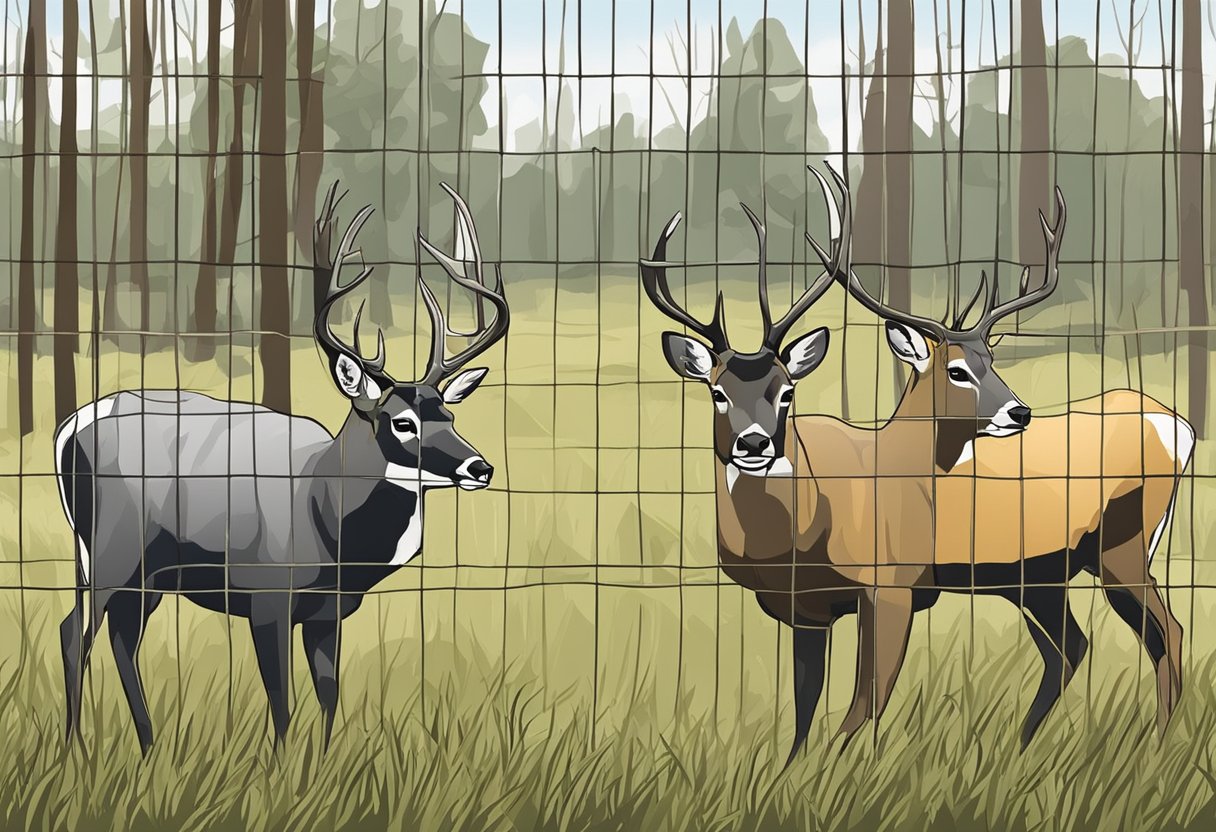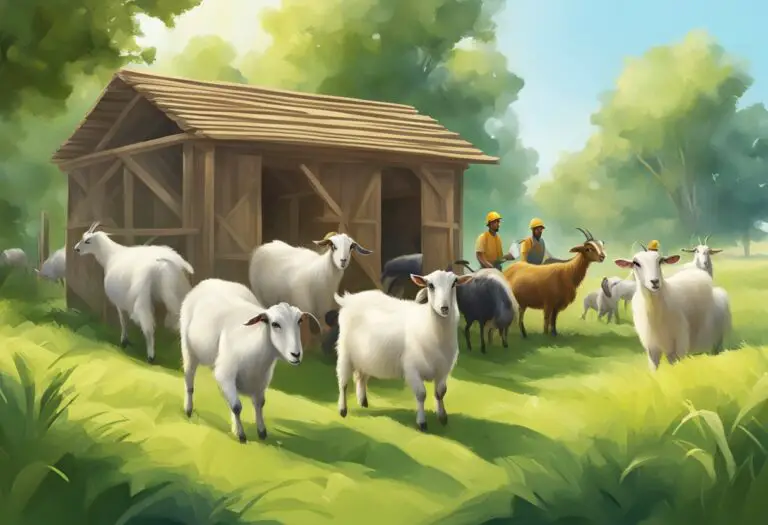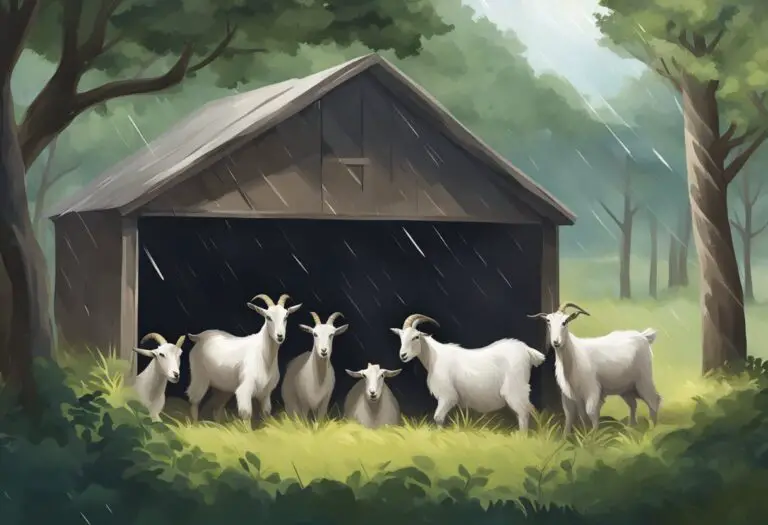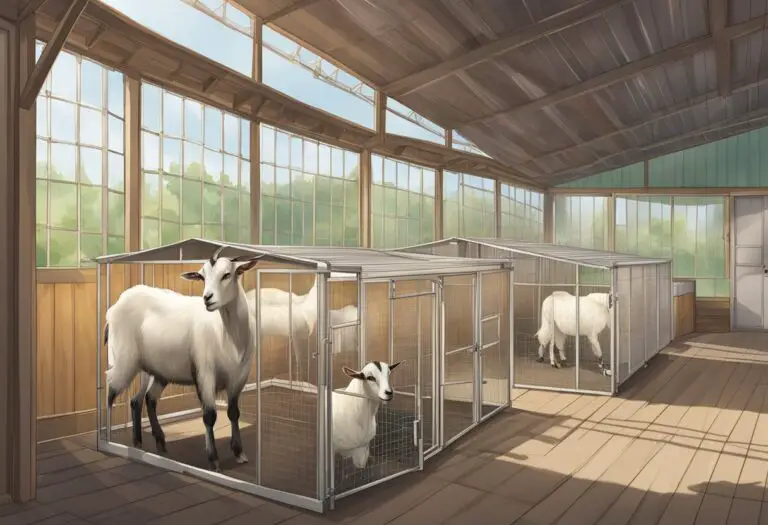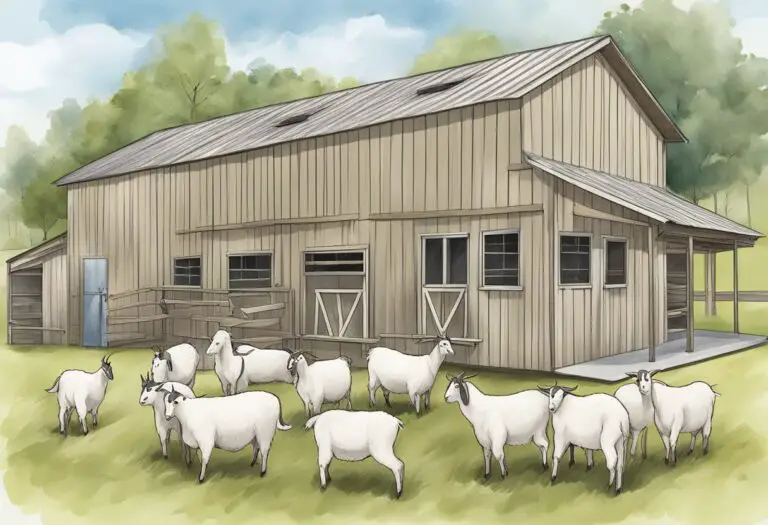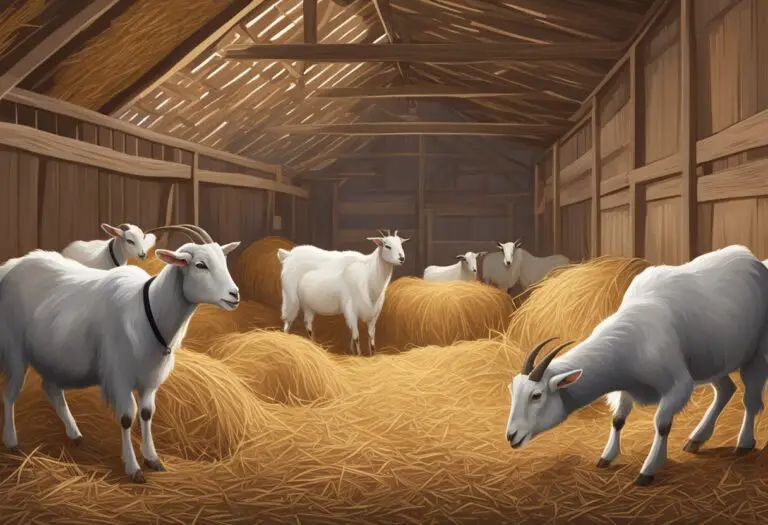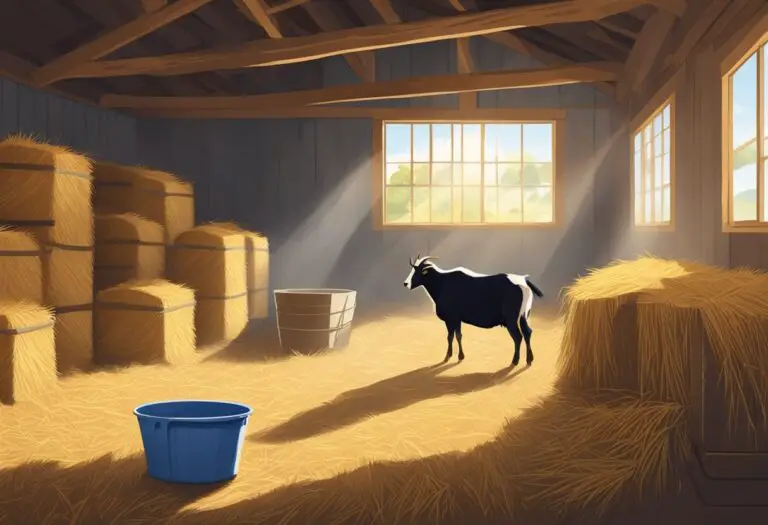Is Separate Housing Necessary for Bucks and Does
Separate housing for bucks and does is a topic that often sparks debate among goat owners. While some believe that keeping male and female goats together is perfectly fine, others argue that it is necessary to separate them in order to prevent unwanted breeding and ensure the safety and well-being of both bucks and does. In this article, we will explore the reasons why some goat owners choose to separate their bucks and does and examine the potential benefits and drawbacks of doing so.
One of the main reasons why goat owners choose to keep bucks and does separate is to prevent unwanted breeding. If a buck and doe are housed together, there is a high likelihood that they will mate, potentially resulting in unwanted pregnancies and offspring. This can be particularly problematic if the doe is not ready to breed or if the buck is too closely related to the doe, which can increase the risk of genetic defects in offspring. Additionally, keeping bucks and does separate can help to prevent aggressive behavior and fighting between males, which can be dangerous for both the animals and their handlers.
Importance of Separate Housing for Bucks and Does

When it comes to raising goats, it is essential to have separate housing for bucks and does. There are several reasons why this is important.
Firstly, keeping bucks and does together can lead to unwanted breeding. If you are not planning to breed your goats, this can be a problem. Bucks can become aggressive during breeding season, and this can cause injury to the does.
Secondly, separate housing allows you to control breeding. If you want to breed your goats, you can choose when and with whom they breed. This can help you to produce healthier offspring and maintain the quality of your herd.
Thirdly, separate housing can help to prevent the spread of diseases. Bucks can carry diseases that are harmful to does, and vice versa. By keeping them separate, you can reduce the risk of disease transmission and keep your goats healthy.
In conclusion, separate housing for bucks and does is essential for successful goat farming. It allows you to control breeding, prevent unwanted breeding, and reduce the risk of disease transmission.
Physical Differences and Housing Needs

When it comes to housing, it is important to consider the physical differences between bucks and does. Bucks are generally larger and more aggressive than does, which means they require more space and different housing arrangements.
Space Requirements for Bucks
Bucks require more space than does to prevent fighting and to give them room to exercise. A single buck should have at least 20 square feet of space in their housing area. If multiple bucks are housed together, the space requirement should be increased accordingly. It is important to note that bucks should not be housed with does, as this can lead to unwanted breeding and fighting.
Space Requirements for Does
Does require less space than bucks, as they are generally smaller and less aggressive. A single doe should have at least 10 square feet of space in their housing area. If multiple does are housed together, the space requirement should be increased accordingly. It is important to note that does should not be housed with bucks, as this can lead to unwanted breeding and fighting.
Overall, it is important to provide adequate space for both bucks and does to prevent fighting and promote good health. By understanding the physical differences between bucks and does, you can provide appropriate housing arrangements that meet their specific needs.
Behavioral Considerations

Aggression and Territory
Bucks and does may exhibit aggressive behavior towards each other during the breeding season. This is because bucks become territorial and may become aggressive towards other bucks and does. Bucks may also exhibit aggressive behavior towards does during breeding, which can lead to injuries or even death.
Separating bucks and does can prevent such aggressive behavior and ensure their safety. Bucks and does should be housed in separate enclosures during the breeding season. This will help to reduce the risk of injuries and ensure that both bucks and does remain healthy.
Breeding Control
Separate housing for bucks and does can also help in controlling breeding. Bucks can impregnate multiple does in a short period of time, which can lead to overpopulation and other problems. By separating bucks and does, breeders can control breeding and ensure that only the desired does are bred.
In addition, separating bucks and does can help in monitoring the breeding process. Breeders can keep a record of the breeding dates and the number of offspring produced, which can help in managing the herd effectively.
Overall, separate housing for bucks and does is necessary to ensure their safety and well-being. It can also help in controlling breeding and managing the herd effectively.
Health and Welfare

Disease Prevention
Separate housing for bucks and does can aid in disease prevention. When kept together, bucks and does may engage in breeding activities, which can lead to the spread of sexually transmitted diseases. Additionally, if one animal becomes ill, it is easier to isolate and treat them if they are housed separately.
Stress Reduction
Separate housing for bucks and does can also help reduce stress. When kept together, bucks and does may engage in aggressive behaviors, which can lead to injuries and stress for both animals. Separating them can provide a more peaceful environment and reduce the risk of injuries. Additionally, does may become stressed during pregnancy and giving birth, and separating them can provide a more comfortable and stress-free environment for these important events.
Overall, separate housing for bucks and does can provide many benefits for their health and welfare. By preventing the spread of diseases and reducing stress, they can live happier and healthier lives.
Practical Aspects of Housing Setup

Housing Design
When it comes to housing bucks and does, it is important to consider the design of the housing. Separate housing is recommended for bucks and does to prevent breeding and territorial fights. The housing should be spacious enough to accommodate the goats comfortably, with enough room for each goat to move around freely.
The housing should also be well-ventilated to prevent respiratory problems and should have proper drainage to prevent moisture buildup. A raised platform can help keep the goats dry and comfortable. Additionally, the housing should be secure to prevent predators from entering and attacking the goats.
Equipment and Accessories
In addition to the housing design, equipment and accessories are also important considerations. Each goat should have its own feeding and watering station to prevent competition and ensure that each goat is getting the proper amount of food and water.
Bedding should be provided to keep the goats comfortable and to absorb moisture. Straw, hay, or wood shavings can be used as bedding. It is important to clean the bedding regularly to prevent the buildup of bacteria and parasites.
Finally, it is important to provide enrichment activities for the goats to prevent boredom and promote mental stimulation. Toys, such as balls or hanging objects, can be provided for the goats to play with.
Overall, providing separate housing for bucks and does, with proper design, equipment, and accessories, can help ensure the health and well-being of the goats.
Legal and Ethical Considerations

Animal Welfare Laws
When it comes to housing bucks and does separately, there are certain legal considerations that must be taken into account. In many countries, animal welfare laws dictate that animals must be provided with adequate space, food, water, and shelter. This means that if bucks and does are housed together, the enclosure must be large enough to accommodate both animals comfortably.
It is also important to note that in some areas, the law requires that bucks and does be housed separately. This is because bucks can become aggressive during breeding season, and may injure does if they are housed together. In addition, keeping bucks and does in separate enclosures can help prevent the spread of disease and parasites.
Ethical Breeding Practices
In addition to legal considerations, there are also ethical considerations when it comes to housing bucks and does separately. Many breeders believe that separating bucks and does is the best way to ensure the health and well-being of their animals. By keeping bucks and does in separate enclosures, breeders can closely monitor their animals for signs of illness or injury, and can provide individualized care as needed.
Separating bucks and does can also help prevent inbreeding, which can lead to a variety of health problems in offspring. By carefully selecting breeding pairs and keeping bucks and does in separate enclosures, breeders can help ensure that their animals produce healthy, genetically diverse offspring.
In conclusion, while there may be some exceptions, it is generally considered best practice to house bucks and does separately. This can help ensure the health and well-being of the animals, as well as prevent the spread of disease and parasites. Additionally, separating bucks and does can help prevent inbreeding and promote genetic diversity in offspring.
Maintenance and Daily Care

Cleaning Protocols
Maintaining a clean and hygienic environment is essential for the health and well-being of both bucks and does. Separate housing for bucks and does is recommended to prevent unwanted breeding and aggression. It also makes cleaning and maintenance easier.
Bucks and does produce different types of waste, and their housing must be cleaned accordingly. Buck’s urine has a strong odor, and it is advisable to clean their housing daily. A deep clean, including washing the walls and floors, should be done weekly. Does, on the other hand, produce more solid waste, and their housing can be cleaned every other day, with a deep clean once a week.
It is important to use non-toxic cleaning products to avoid harming the animals. Regular cleaning and disinfecting of the housing will prevent the spread of diseases and parasites.
Feeding Routines
Feeding routines for bucks and does should be tailored to their specific nutritional needs. Bucks require a diet high in protein to maintain their muscle mass, while does need a balanced diet to support their reproductive system.
It is recommended to feed the animals twice a day, with a mix of hay, fresh vegetables, and pellets. Bucks and does should be fed separately to prevent competition and aggression.
Water should always be available to the animals, and their water source should be cleaned and refilled daily. It is also important to monitor their water intake to ensure they are adequately hydrated.
In conclusion, separate housing for bucks and does is necessary for their health and well-being. Maintaining a clean environment and providing a balanced diet and adequate water is essential for their daily care.
Case Studies and Research Findings

Studies have been conducted to determine whether separate housing for bucks and does is necessary. According to a study published in the Journal of Animal Science, housing bucks and does separately can reduce aggression and improve reproductive performance. The study found that when housed together, bucks were more aggressive towards does, resulting in decreased pregnancy rates and increased injuries.
Another study published in the Journal of Dairy Science found that separating bucks and does can also reduce the transmission of diseases. The study found that when housed together, goats were more likely to transmit diseases such as caprine arthritis encephalitis virus and Mycobacterium avium subsp. paratuberculosis.
However, it is important to note that not all studies have found a significant difference in reproductive performance or disease transmission when bucks and does are housed together. A study published in the Canadian Journal of Animal Science found that there was no significant difference in pregnancy rates or disease transmission between goats housed together and those housed separately.
Overall, while there is some evidence to suggest that separate housing for bucks and does can be beneficial, more research is needed to determine the best housing practices for goats and other livestock.

